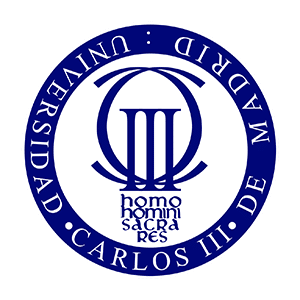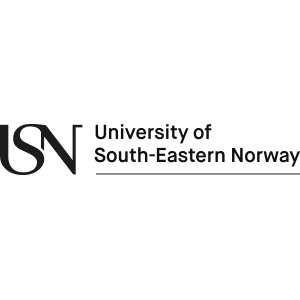Consortium
All partners have a strategic interest directly related to their respective roles in the project lying behind their participation in AEROMIC project. In accordance with this, each participant has also demonstrated beyond any doubt their strong commitment to the AEROMIC project. It is clear, that the capability to deliver an ambitious innovative project such as AEROMIC is not available within a single member country. The key factors of required knowledge and skills demand that this work be pursued as a collaborative project at a European level.
Careful consideration has been given to the composition of the team, reflecting a balance between the need for a limited number of partners on one hand, to ensure efficiency and focus, and the need to have a sufficiently wide “breadth of participation” to provide a wealth of new ideas and to contain the required wide range of skills. The AEROMIC consortium has been constituted of 6 partners from 4 European countries. The partners stem from Austria (2), Germany (2), Spain (1) and Norway (1), giving the project a truly European dimension. The AEROMIC consortium is composed of 2 SMEs (VF, US), 3 university research groups (TUB, UC3M and NSU), and one research institute (SAL). The project coordination is taken over by SAL. Due to the broad-covering expertise of the partners, the risks inherent to the proposed R&D are minimized, whilst full research and commercial flexibility are maintained. The AEROMIC consortium is supported by Airbus.
Silicon Austria Labs (SAL) is an RTO established with the aim to become a top European re-search center for Electronic Based Systems (EBS). EBS are components, assemblies and devices with microelectronics and nanoelectronics, systems as well as embedded software, that form the technological backbone of digitalization. Currently, SAL research staff comprises of 140 people at pre- and postdoctoral level, which shall increase to approximately 300 within the next three years, distributed across the three different sites Graz, Linz and Villach.
SAL is the coordinator of the project AEROMIC and in charge of the project management and the development of piezoelectric MEMS microphones for aeroacoustic measurements. In this project, SAL aims to develop a new-type piezoelectric MEMS microphone and a digital microphone array based on the MEMS microphone, which is dedicated to accurate acoustic measurements with high spatial resolution during wind-tunnel and flight tests and suitable for surface.
Key contributions
SAL will make a major contribution to all the work packages (WPs). The main tasks consist of (1) the leadership in WP1 (Project Management), and (2) the participation in WP2 (Specifications and Requirements), WP3 (MEMS Prototyping), WP4 (System Integration and Packaging), WP5 (Sensor Qualification), and WP6 (Dissemination and Exploitation). In this project, SAL aims to develop a new piezoelectric MEMS microphone and a digital microphone array based on the MEMS microphone, which is dedicated to accurate acoustic measurements with high spatial resolution during wind-tunnel and flight tests and suitable for surface unsteady pressure measurements at arbitrary model/aircraft position (including cockpit area).


TU Berlin is one of the largest technical universities in Germany offering a wide range of subjects with currently 35.000 students. In addition to the core subjects of natural sciences and engineering, students are instructed by more than 350 professors and an academic staff of 2500. Close to 8000 employees work for the University. The institute involved in AEROMIC, TUB’s Research Centre for Microperipherics Technology, has about 60 employees. The scope of work encompasses all aspects of sensor simulation, thin film technology, wafer level packaging, miniature assembly and integration technology, ranging from basic technology development incl. material investigations towards complex system integration and its lifetime predictions by semi empirical means and simulation tools. A large number of bilateral/multilateral projects with the European industry were successfully performed, transferring the technology to the partners for future use.
In this EU project TUB is in charge of development of novel ultra thin piezoresistive microphone sensors for WTT and FT at DLR (German Space Agency) and Airbus. TUB is leading two WPs in this project – WP3 and WP6; and participating in WP4. In WP3 the piezoresistive and hot-wire sensor will be developed and produced together. The TUB’s activities in this WP cover the entire development of the sensors, development, processing and fabrication. In WP 4 TUB oversees the packaging and integration of realized sensors in WP4 into array which meets the requirements for use in WTT and FT. The objectives of WP 6 are to ensure that suitable exploitation plans are drawn up, to identify and manage the intellectual property developed, and to disseminate the results of AEROMIC project by addressing the general public, the academic world, and, most importantly, our target users and potential business stakeholders, To integrate new knowledge through synergies between partners along the entire AEROMIC value chain will be enhanced, through reciprocal internal training and a thorough exploitation programme and to set up effective innovation management mechanisms and to effectively handle IPR issues.
Key contributions
WP3: TUB designs and simulates the piezoresistive and hot-wire sensors with experts and hand-in-hand with consortium and topic leader to meet the requirements. TUB will realize the sensors in the cleanroom on a large wafer size of 200mm. After characterization a re-design step will be carried out to verify and finalize the sensor designs. The final sensors will be manufactured for packaging and integration in WP4 and qualification in WP5 and the use in WTT and FT.
WP4: TUB is assembling and integrating the MEMS piezoresistive and hot-wire sensors stress free into a demonstrator and characterizing the system.
WP6: TUB will lead the “academic dissemination” and contribute to the exploitation activities: results publication, exploitation plan development, commercial communication.

Vectoflow makes standard and customized measurement solutions to determine the state of a flow. Vectoflow offers customized flow measurement products and systems to measure velocity, angle of attack, static and total pressure, as well as the temperature of a flow. The geometry, size, and material of our probes can all be customized to the customer’s requirements. We use an innovative additive manufacturing method to significantly increase the robustness of the probes, even for extremely harsh environments with high temperature and high pressure. We work with distributors and customers in several countries and specialty areas, such as motorsports, aviation, turbomachinery and scientific research.
Vectoflow will play a key role in drafting the requirements of the sensors and sensor arrays for flight testing and wind tunnel testing. Consequently, Vectoflow will plan and perform physical, performance, and investigative tests for both applications. The evaluation of test results and the validation will be led by Vectoflow. Vectoflow will also be involved in front end software needs to ensure efficient testing solutions for the expensive flight and wind tunnel tests.
Key contributions
Vectoflow will contribute with broad experience in aerodynamic wind tunnel and flight testing. Vectoflow runs an acoustic test rig and a wind tunnel which provide necessary support for the development phase. To leverage the consortium into a good market position, Vectoflow will make extensive market exploitation addressing aeroacoustics and aerodynamic departments from the research and industry sectors.

USound GmbH designs, develops and markets highly integrated micro-loudspeakers based on a new piezoelectric MEMS (Micro-Electro-Mechanical System) technology. USound, founded in 2014, is based in Graz, Austria, with offices in Vienna, Austria, San Francisco, USA and Shenzhen, China. USound has been growing fast from the start, with a current headcount of 58 people. USound’s revenue model is based on a high-volume sales of MEMS loudspeakers on a B2B basis to OEMs or other manufacturers of audio equipment.
USound’s Vision is to be at the forefront of the digital transformation of the loudspeaker market. USound is a recognized design house for innovative and high-quality acoustic system solutions based on the unique features of the MEMS technology. USound is pursuing a fabless business model, concentrating on its core technological competences: audio and MEMS technology, ASIC integration and manufacturing know-how, as well as IP protection and exploitation (37 patent families filed).
Key Contributions
USound brings R&D and industrial expertise on silicon piezoelectric transducers to the AEROMIC project. The main tasks consist of the participations in WP2 (Specifications and Requirements), WP3 (MEMS Prototyping) and WP4 (System Integration and Packaging). In this project, USound aims to support design and realization of the novel piezoelectric MEMS microphones and array configurations on electronics substrates.

University Carlos III of Madrid (UC3M) is a public University with around 21,000 students and almost 2,000 teaching and research staff. Established in 1989, the mission of Carlos III University of Madrid is to contribute to the improvement of society through teaching of the highest quality and cutting-edge research in line with stringent international guidelines. The research team participating in this proposal belongs to Sensors and Instrumentation Techniques Research Group (SIT) of the Electronic Technology Department and contributes with its knowledge on optical and electronic instrumentation systems development as well as its experience on electronic instrumentation system integration in aeronautical and military environments.
SITec-UC3M will be the leader of WP4: System Integration and Packaging, and as such SITec-UC3M will coordinate the tasks associated to the Design and Manufacture of Data Acquisition Electronics, the development of Software and Algorithms for Data Processing, the Assembly, packaging, and the testing of the MEMS microphone arrays.
The key contributions from SITec-UC3M to Aeromic include the design and manufacturing of all the electronics, from sensor signal conditioning to signal acquisition and preprocessing, the development of the acquisition and calibration routines, the integration of the complete instrumentation system and provide support to laboratory testing and calibration.

University of South-Eastern Norway (USN) is Norway’s fourth largest state funded University after the recent merger of 2 smaller university colleges from spring 2018. It has 18 000 students and 1800 employees. As well as education, USN is involved in both basic and applied research at regional, national and international levels. Since 2001 research activities at the Department for Microsystems (IMS) has been dedicated to a strategic and long-term development of research and education in applied micro and nanosystems technology. The research infrastructure has a national standing. Research activities in the department are centred on the following: electronic interconnection & packaging technologies, materials and micro-integration, micro acoustic and optics, micro-and nanoelectromechanical systems, micro- and nano sensor technologies, and BioMEMS. From 2015, IMS at USN is partner of national Centre for Research-based Innovation (SFI) for “Innovative Ultrasound Solutions” CIUS, where industry and academia collaborate to develop the next generation of ultrasound solutions.
USN IMS’s expertise matches well with the project tasks specified for USN in this project.
Key Contributions
IMS will make the following contribution: (1) task leader for WP3.3 (prototype fabrication of the piezoelectric MEMS microphone), (2) participation in WP2 (Specifications and Requirements), WP3.5 (optimization of the piezoelectric MEMS microphone), WP4 (System Integration and Packaging), and WP6 (Dissemination and Exploitation). In this project, IMS together with SAL aims to develop a new ultra-thin piezoelectric MEMS microphone, which is dedicated to accurate acoustic measurements with high spatial resolution during wind-tunnel and flight tests and suitable for surface unsteady pressure measurements at arbitrary model/aircraft position (including cockpit area).

DLR is the Federal Republic of Germany’s research centre for aeronautics and space. We conduct research and development activities in the fields of aeronautics, space, energy, transport, security and digitalisation. The DLR Space Administration plans and implements the national space programme on behalf of the federal government. Two DLR project management agencies oversee funding programmes and support knowledge transfer.
Climate, mobility and technology are changing globally. DLR uses the expertise of its 54 research institutes and facilities to develop solutions to these challenges. Our 9800 employees share a mission – to explore Earth and space and develop technologies for a sustainable future. In doing so, DLR contributes to strengthening Germany’s position as a prime location for research and industry.
